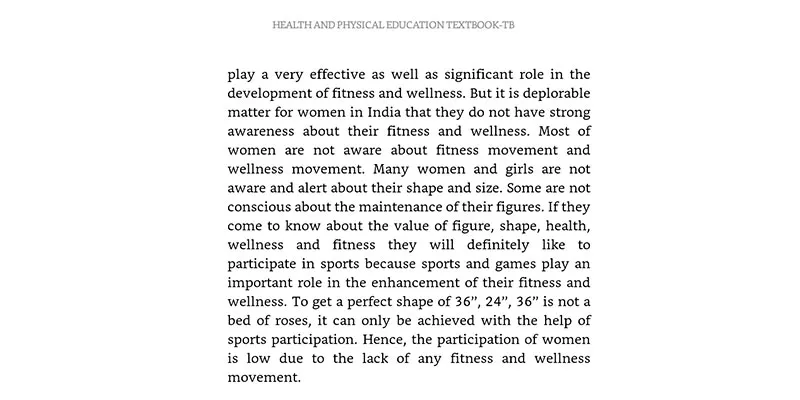36-24-36 is ideal figure for women, according to a Class 12 CBSE textbook
If you are working hard to achieve that size zero figure like Kareena Kapoor, then you are in for a rude shock, because size zero is passé.
According to the class 12 CBSE Health and Physical Education textbook, 36-24-36 is considered the best shape for females. “That is why in Miss World or Miss Universe competitions, such type of shape is also taken into consideration,” states the textbook. The book further goes on to talk about how difficult it is to get the perfect figure. “To get a perfect shape of 36”, 24”, 36” is not a bed of roses, it can only be achieved with the help of sports participation.”

Why should a book whose subject is health, sports, and physical fitness talk about the perfect body size in the context of beauty queens? In fact, the figure promoted by Miss Universe 2017 is far from the perfect body size recommended by the textbook.
There is an entire chapter in the book dedicated to Women and Sports. A closer look at the chapter reveals some interesting facts about women’s bodies that the authors of the book want to convey:
The textbook states, “Many women and girls are not aware and alert about their size. Some are not conscious about the maintenance of their figures.”

While the discourse is about women and their participation in sports, the way the book talks about women's bodies and how they do nothing to achieve that perfect figure is surprising. That’s body shaming right there.
The chapter also conveys a general sense of gloom about the condition of women in sports. Instead of talking about the achievements of women in sports despite all odds, it talks about the problems and challenges they face in a way that is discouraging. It gives the example of how Mary Kom’s father objected to her taking up boxing because he felt it would spoil her face and ruin her marriage prospects. There is no reference to Mary’s successful career or her achievements.
The chapter reeks of sexism—while teaching women how they should look at themselves and their bodies, it also emphasises that women are better off playing sports that make them look feminine and that more "masculine" sports make them less appealing. The book states, “Recent results suggest that female athletes competing in various sports viewed as masculine were rated as less likeable than those competing in feminine sports. Indeed, sports is traditionally considered a masculine activity. When women enter the male domain of sports, tensions rise. This can be seen in media discourse on women’s sports.”
While the book talks about the challenges women face, it refrains from claiming that women face discrimination. “Most probably, there is discrimination between men and women in the field of sports.” The usage of "most probably" shows the patriarchy and bias women face in all fields and on all fronts.
A textbook for senior students that makes discrimination a “probable” shows how deep sexism and patriarchy have penetrated. If such textbooks are being approved for the curriculum, then how will education uplift the female students and help them overcome the challenges the book does not stop harping about?







